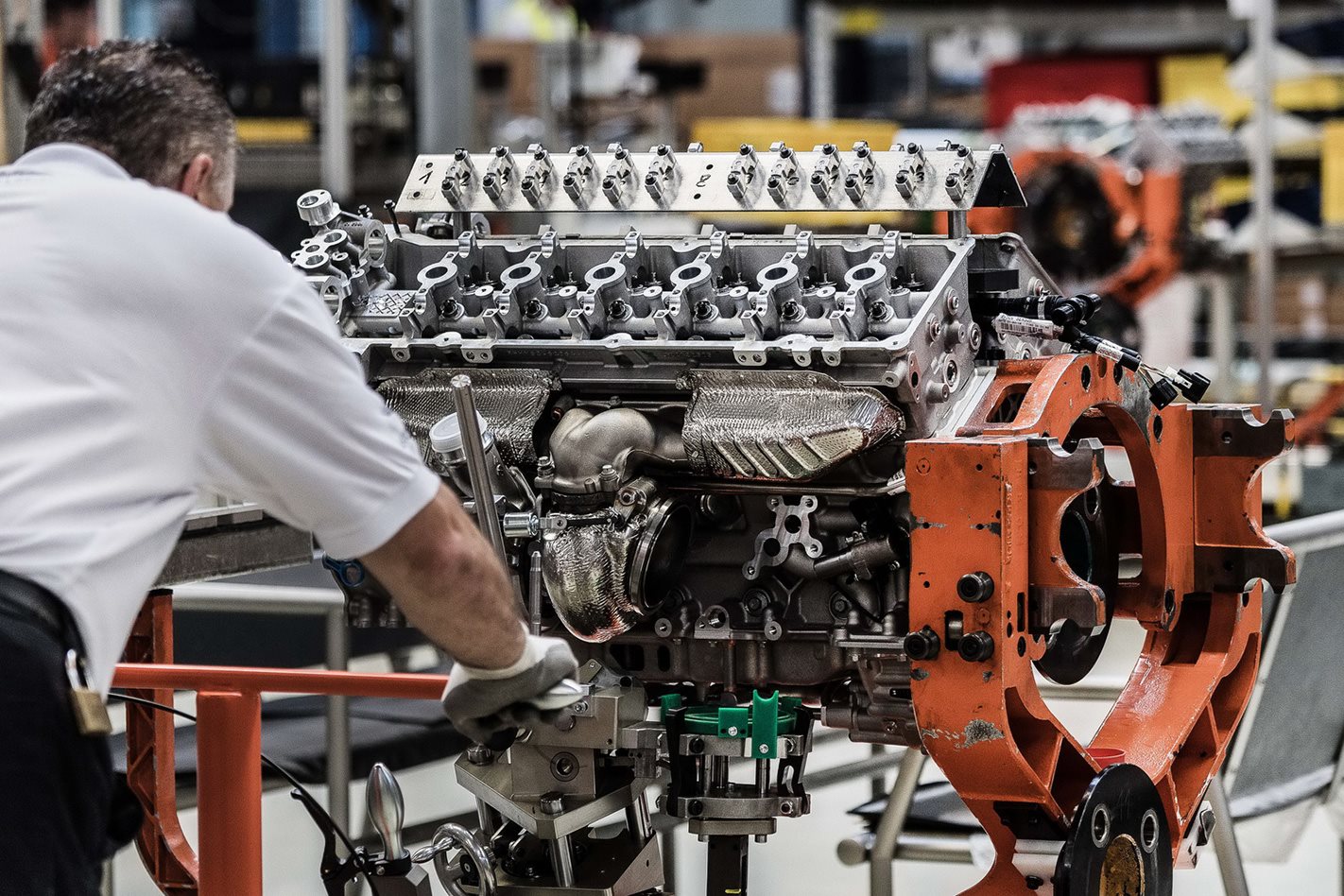
Here at WhichCar we try and explain cars in the simplest of terms. We’ve given you the skinny on what makes bigger engines better, explained twin-cam engines, detailed turbo tech and taken the mystery out of what power and torque are.
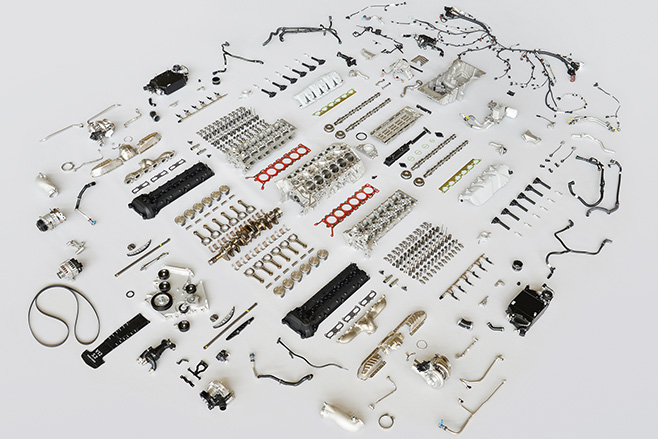
So what happens when you combine all of those principles together? Do it right, and you get something approximating the array of parts you see here. This is an entire engine from an Aston Martin DB11 coupe – a twin-turbocharged 5.2-litre V12 producing 447kW of power and 700Nm of torque – approximately double the oomph generated by a Holden Commodore SV6.
Obviously this engine looks a little more… complete when installed in a Aston Martin DB11, but in this exploded view we can take a good look at all the parts that make Aston’s most technologically-advanced powerplant so special.
ENGINE BLOCK
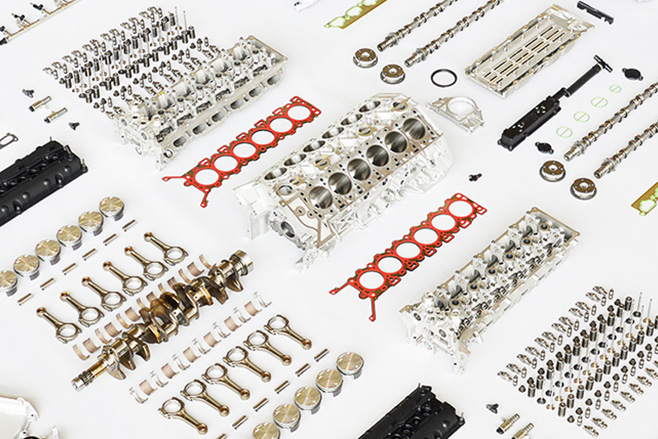
This big hunk of aluminium alloy is the 5.2-litre engine block, the vital core to which all major components are bolted. Visible are the 12 cylinders that house its pistons and conrods (which are visible to the left of frame), arranged in two rows of six at a ‘V’ angle of 60-degrees.
The conrods (short for connecting rods) run between the pistons in the cylinders and the crankshaft at the base of the block (pictured lower left, middle), which spins and moves the conrods and pistons up and down.
In the image here, the two cylinder heads sit on either side of the block. These are bolted to the top of block above each row of cylinders, with the red gasket forming a seal between the heads and the block.
TURBOCHARGER
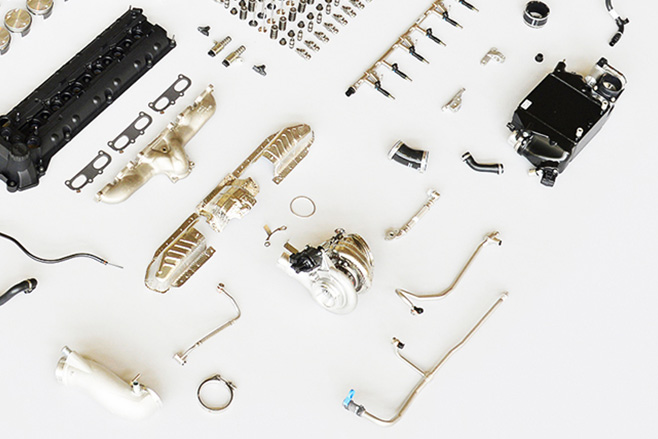
That shiny snail-like contraption in the centre of frame is one of the DB11’s two turbochargers, which supply pressurised air to the engine to help it make more power.
The turbo has two halves. The rear half of the turbo – the turbine housing – bolts to the exhaust manifold (the log-like part in the upper left), and uses spent exhaust gas from inside the engine to spin a small wheel. That wheel (the turbine), is connected by a shaft to another wheel (the compressor) that sits in the front half of the turbo. When it spins, it compresses fresh air and sends it into the engine via an intercooler (the black box in the upper right), which keeps the air temperature down.
The various pipes and hoses around the turbo keep it supplied with oil. The turbine and compressor spin incredibly fast when the engine is working hard and together they generate a lot of heat. A constant feed of oil keeps the turbo cool and spinning freely.
SUMP AND WIRING
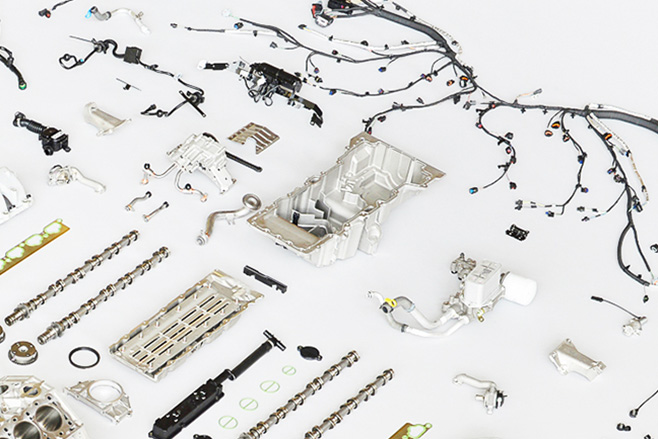
The oil for the engine and turbochargers is held at the bottom of the engine in a cast alloy bowl, called a sump. Oil is delivered to the engine via the oil pump and filter, shown sitting either side of the sump. The black spaghetti above the sump is the electrical wiring loom that plugs into every sensor, injector and solenoid on the engine, linking them with the Engine Control Unit that manages them.
In the lower left you can see the four camshafts that sit at the top of the engine heads. There are two camshafts above each bank of six cylinders, where they open and close the engines 48 valves. Each cylinder has four valves – two that let air and fuel in, and two that let the exhaust gas out, where it goes on to spin the turbocharger, mentioned above.



